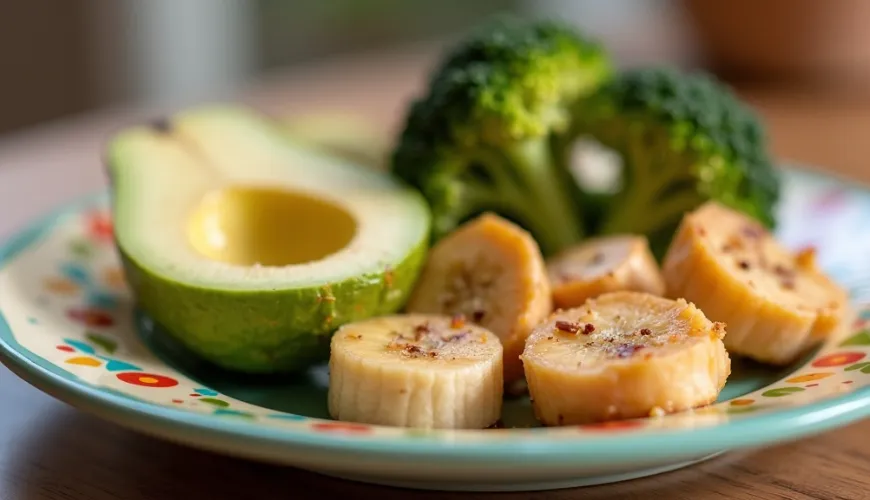
What does the practical application of the BLW method in the family entail?

What is the BLW method and why are parents around the world interested?
When a baby first looks at a piece of apple or carrot and grabs it with their fingers instead of a spoon, it introduces an approach known as the BLW method – an abbreviation for "Baby Led Weaning". This method of feeding infants has gained popularity not only among parents but also among pediatricians and child nutrition experts over the past decade. The basic idea is simple: the child chooses what, when, and how to eat – literally taking food into their own hands.
Unlike the traditional transition to solid foods, where the child is fed purees and mashed foods with a spoon, the BLW method gives toddlers the confidence and space to explore the world of flavors, textures, and colors on their own. However, this is not just a trend among Instagram moms. Various studies and family experiences show that this approach can offer unexpected benefits – but also challenges.
How does the BLW method work in practice?
Imagine a typical day in a household practicing "baby-led weaning". Instead of preparing vegetable puree for the baby at 6 months and feeding them with a spoon, parents place the child in a high chair at the table and offer them appropriately prepared pieces of soft vegetables – like cooked carrots, pieces of sweet potato, or avocado. The child picks what interests them and explores the food at their own pace. Initially, more food might end up on the floor than in their tummy, but over time and with experience, motor skills and the ability to actually eat improve.
It's important to respect the child's pace. BLW is not about quickly feeding the child, but about supporting their independence, ability to listen to their own body, and developing a healthy relationship with food from the first bites.
Advantages of the BLW method
One of the biggest advantages of this method is fostering independence and confidence in the child's abilities. When a child is not guided by external adult instructions but follows their own appetite, they learn to better recognize feelings of hunger and fullness. This can positively affect future prevention of overeating and the development of healthy eating habits.
Moreover, the BLW method naturally develops fine motor skills – as the child grasps different shapes and textures of food, they train their fingers, wrists, and hand-eye coordination. Notably, children who eat this way are often less picky about food. Early contact with diverse foods helps build a broader range of taste preferences and reduces the tendency to reject new flavors.
From a practical standpoint, parents appreciate that the child can eat the same food as the rest of the family – of course, with certain modifications. This simplifies meal preparation and supports family meals, which have significant social importance for the child.
Considerations - BLW method – pros and cons
Despite growing interest in the BLW method, it is not without controversy. Common concerns include the risk of choking. Therefore, it's crucial to choose the right foods and their preparation – food should be soft enough for the child to chew easily without teeth, and in sizes that are easy to grasp but not choke on.
Another challenge can be insufficient nutrient intake, especially iron, which is crucial for development after the sixth month. Parents should carefully consider the menu composition and include iron-rich foods – such as legumes, broccoli, eggs, meat, or fortified cereals.
The BLW method may not suit every child. Some babies might initially be more passive, less curious, or more sensitive to new textures. In such cases, it's completely fine to opt for a combination of BLW and traditional feeding, allowing flexibility and adaptation to the child's specific needs.
As pediatrician and author of children's nutrition books Gill Rapley, considered a pioneer of BLW, says:
"There is no single right way. It's important to follow the child, not the calendar."
What could a BLW menu look like?
A BLW menu relies on simple, natural ingredients without added salt and sugar. Ideally, it should be varied, colorful, and rich in different textures. In practice, it might look like this:
Example of a BLW daily menu:
- Breakfast: soft slice of avocado, a piece of banana, boiled egg slice
- Lunch: cooked carrot, pieces of steamed chicken, cooked broccoli
- Snack: slices of pear, rye bread with a light avocado mash
- Dinner: baked sweet potatoes, pieces of zucchini or pumpkin, a piece of cheese (e.g., cheddar)
From an ecological and health perspective, it's good to prioritize organic foods and use seasonal vegetables and fruits. Parents often adopt a zero waste approach, trying to limit unnecessary packaging waste when shopping. Here, the BLW method connects with the broader concept of sustainable parenting, considering not only the child's development but also the impact of everyday decisions on the planet.
Real example from parenting practice
Lucie, the mother of eleven-month-old Filip, came across BLW by chance when her son refused both the spoon and any mashed foods. Initially hesitant and worried about choking, after carefully reading up on the topic and consulting a nutritionist, she decided to give Filip more autonomy. Today, they eat together at the table, and Filip enjoys vegetable "sticks", baked sweet potatoes, and pieces of tofu. "It's fascinating to watch him learn not just to eat food, but to understand and explore it with all his senses," says Lucie.
Her experience echoes what many parents report after introducing the BLW method – more joy at mealtime, fewer battles, and more trust in the child's natural development.
The BLW method is not just about what the child eats, but primarily about how they learn to handle food. It offers a path focused on respect, trust, and the natural pace at which a child adapts to solid food. While it presents its challenges, it also opens doors to deeper understanding between parent and child. It's not a universal solution for every family, but it's definitely an approach worth exploring – and perhaps trying out.

